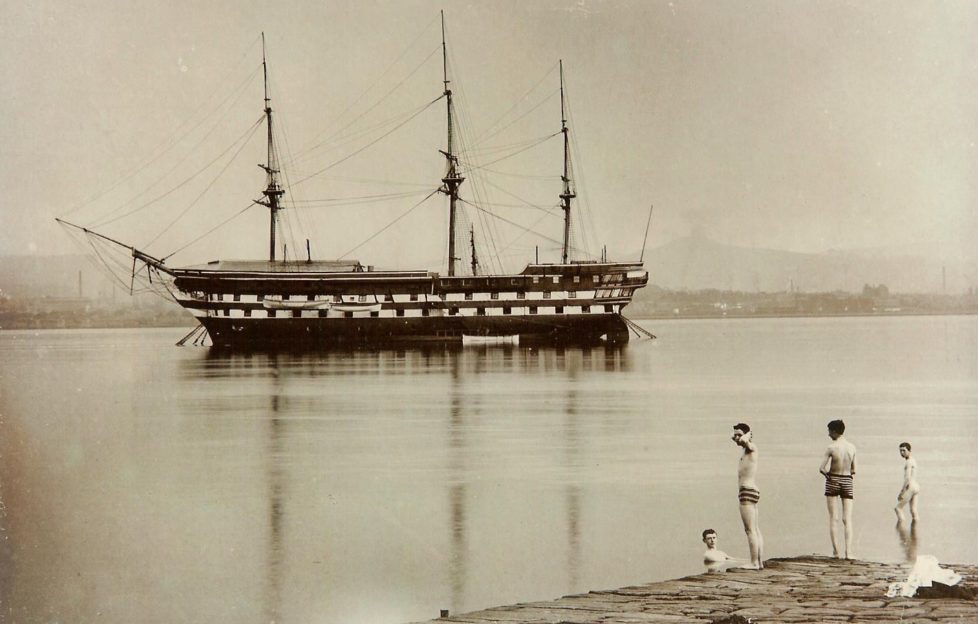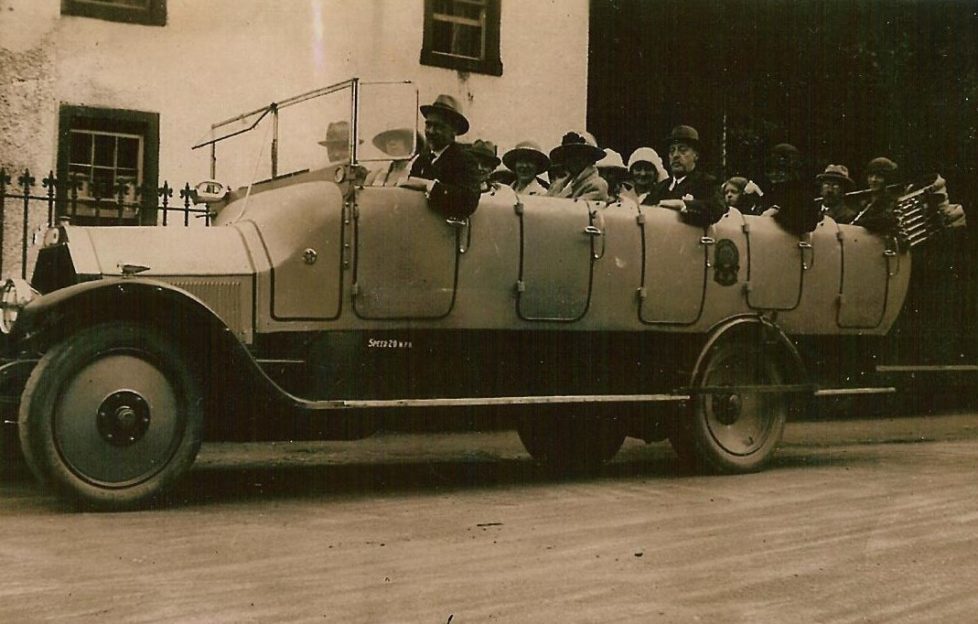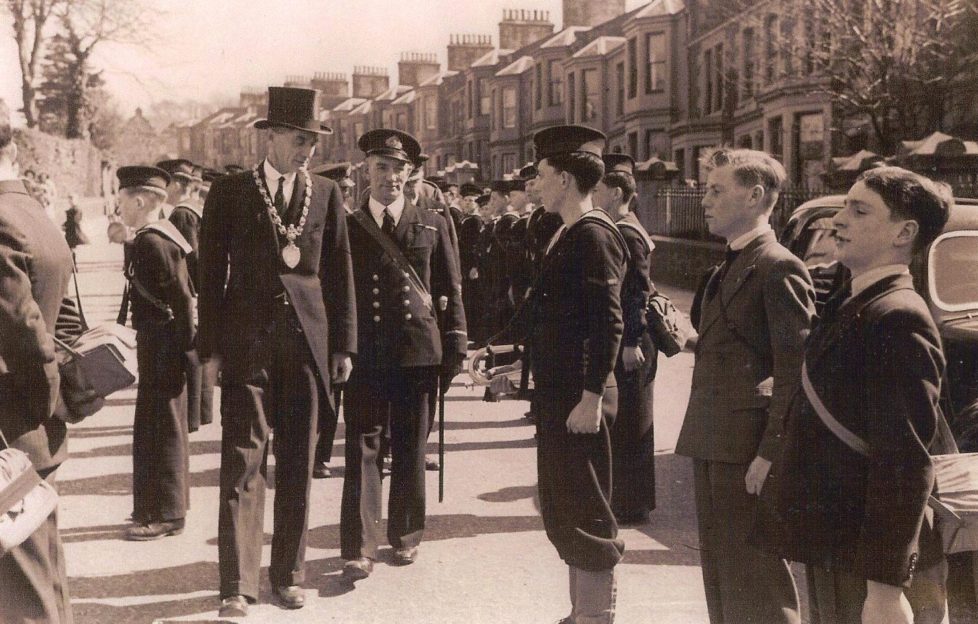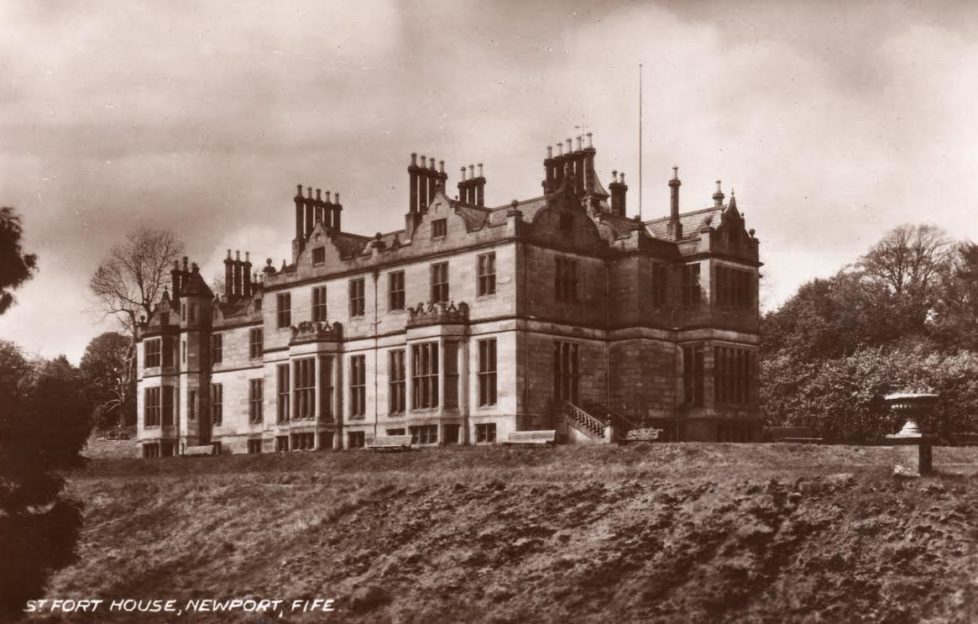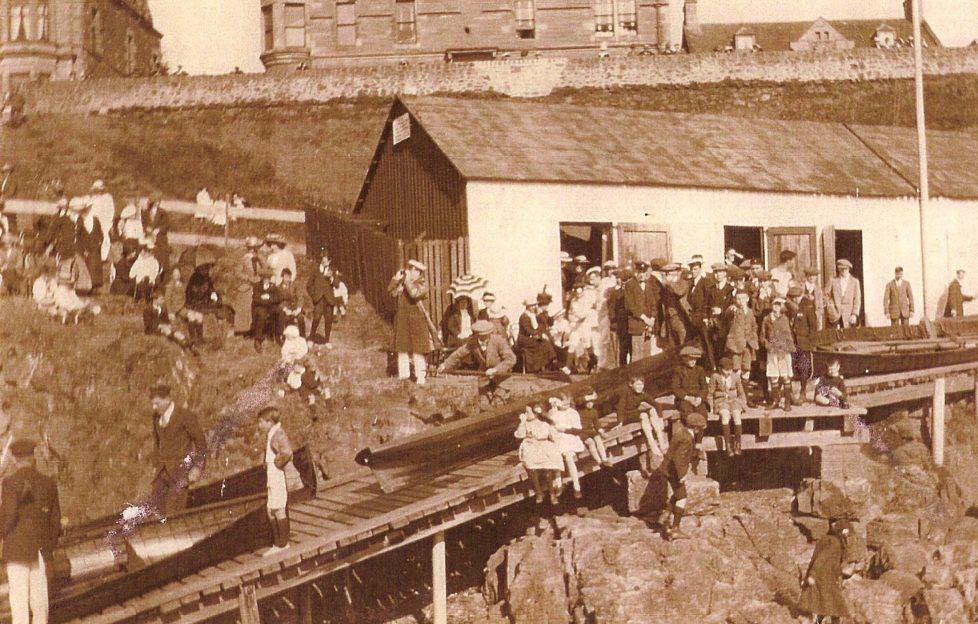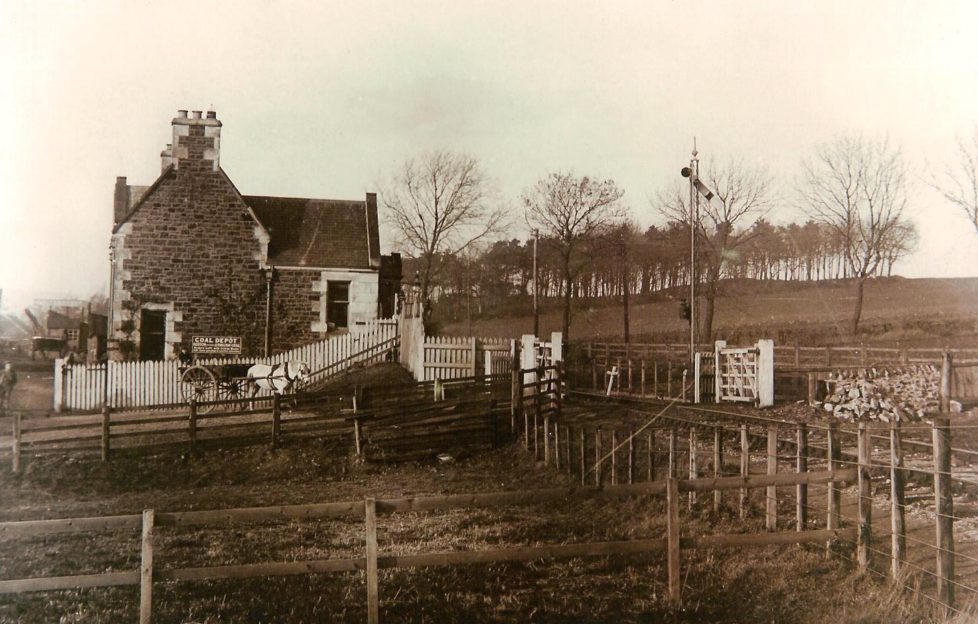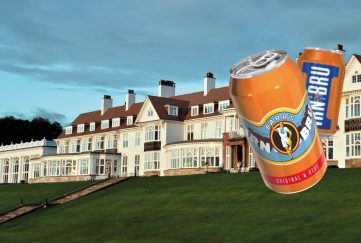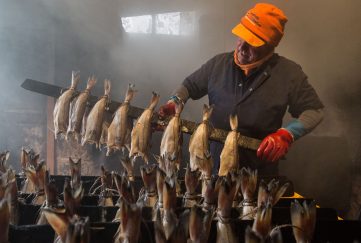Mementos of the Past
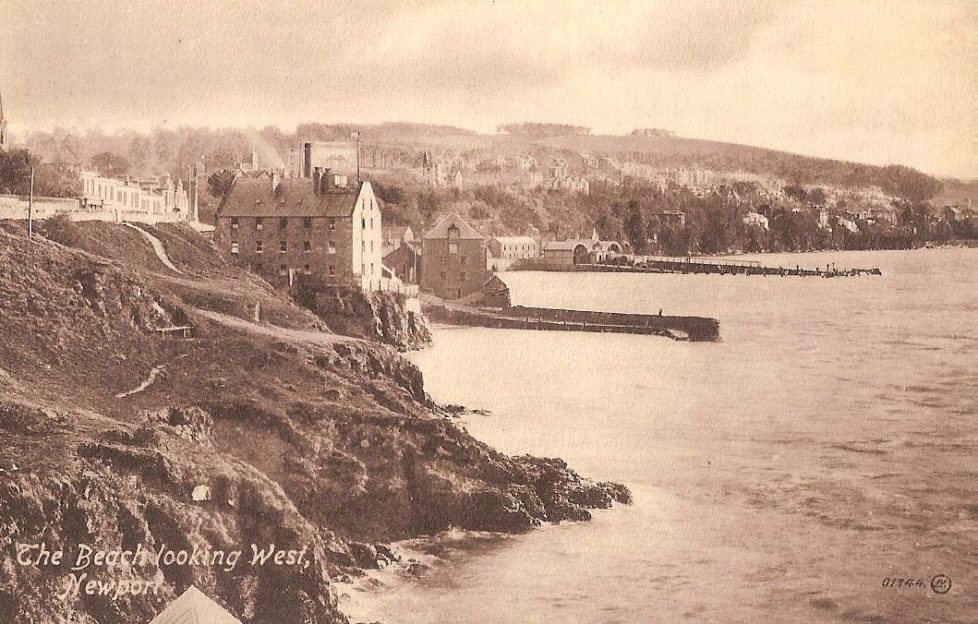
Inside the Old Newport and Wormit Exhibition, with organiser Mairi Shiels
“The villagers of Newport-on-Tay and Wormit are in for a treat over the weekend of Saturday and Sunday 27th and 28th August. This is when the enormously popular Old Newport exhibition will be staged.
This exhibition has been mounted four times previously, in 1990, 1992, 1996 and 2005, and on the last occasion well over 2000 visitors attended, surely an indication of the tremendous interest this event has generated in the past.
With its key position on the opposite shore of the Tay from Dundee, Newport-on-Tay quickly developed in the nineteenth century into a dormitory suburb of Dundee, yet one which has always remained a river apart.
The village has been fortunate to enjoy excellent transport links, first of all as a major staging post for horses and coaches on the Great North Road, and then from the 1820s onwards with the development of the modern ferry service.
The Tay Ferries, more affectionately known as the Fifies, are remembered with great nostalgia. For Dundonians the Fifie was an escape route from the smoke of Dundee to the green fields of Fife, and for Fife residents it provided an efficient transport system right into the heart of the city.
The coming of the railway in the 1870s further reinforced these transport links for both Newport and Wormit, and indeed the delights of the Newport Railway were immortalised by William McGonagall in his poem of that name.
The Tay Bridge disaster of 1879 provided a temporary break in rail links, but the immediate rebuilding of the bridge soon restored communications. The opening of the road bridge in 1966 may have signalled the end of the ferry services, and indeed of the railway too three years later, but it heralded a new chapter for these villages on the south shore of the Tay. This August sees the 50th anniversary of the last Fifie crossing, and the opening of the Tay Road Bridge by the Queen Mother.
This summer’s exhibition will of course focus on these transport links, but visitors will find much more of interest. Much of Newport was built on land belonging to the Tayfield Estate. The first John Berry (1725-1817) bought the land of Inverdovat in 1788 and built his house, so forming the estate of Tayfield.
This estate is in the centre of the village, and local people are fortunate to have very free access to enjoy the beautiful grounds. The close link between village and estate throughout the last two centuries provides another fascinating aspect of the village’s history.
A Different Kind of Rescue Ship
No study of Newport’s past would be complete without some mention of the Mars training ship, moored out in the Tay between Newport and Wormit for 60 years.
The ship provided a home for anything up to 400 young teenage boys, probably what we would now call ‘at-risk’ boys. They were not criminals, but were from poor backgrounds, from broken homes, were orphaned, homeless or destitute, and were hopefully being rescued from the life of crime which they might otherwise enter.
From 1869 until 1929 the ship enjoyed a close relationship with Newport, with the Mars boys taking part in many aspects of village life. A superb display at the exhibition will demonstrate just what life on Mars was like for these young lads.
Activities of the Day
Always popular at previous exhibitions was an enormous section on Newport at Leisure, illustrating the huge range of activities on offer in the days when one had to make one’s own entertainment.
Close proximity to the river ensured that water sports were always popular, and summer days saw the Newport braes crowded with people enjoying their favourite activities.
Both the Rowing Club and Swimming Club had premises on the braes, and busiest of all were regatta and swimming gala days. Wormit Bay was also popular with swimmers.
Other popular outdoor pastimes were tennis, bowling, curling, quoiting, sledging, skating, football, rugby, cricket, hockey and golf. Wormit Bay Golf Course was in operation from 1912 until 1940, and Newport boasted a six-hole course on land at Inverdovat Farm from the 1870s until 1891.
Those of a musical or dramatic disposition could join the Choral Society, the Orchestral Society, the Operatic Society or various drama groups. For those who liked their entertainment presented to them, the Rio cinema had a programme which changed three times weekly from 1939 until 1963.
In addition there were groups for men, groups for ladies, and all the usual youth groups for children. There’s no doubt that the people of Newport have always known how to enjoy themselves, and the exhibition will display photographs and artefacts from all these activities and more.
Six churches were built in Newport in just twenty-five years between 1868 and 1893, with a further two in Wormit some years later, surely an astonishing record of ecclesiastical building in such a small settlement, and an indication of the importance of the church in Victorian life.
Sir John Leng reputedly told a story of being approached on the ferry by a stranger, who said to him –
“What a delightful situation; but what a wicked place Newport must be to need so many churches.”
The exhibition will trace the story of all these churches.
The Forgotten Burgh
Also at the exhibition will be interesting mementos on show from the years when Newport and Wormit enjoyed the status of being a burgh. For almost a century, from 1887 until 1975, the affairs of the villages were managed by the elected town council.
There will be a fascinating section on Newport at War, focusing mainly on World War Two, and especially on the Norwegians who were based here at Woodhaven with their flying boats. But there will also be items relating to the Home Guard, Air Raid Precautions, Evacuees in Newport etc, as well as items from the First World War and even earlier.
Always extremely popular in previous exhibitions was our section on Schools. Giving details of all the schools in the village over the last two hundred years, both private and public, our display will surely bring back happy (or otherwise!) memories of schooldays. In addition we will have on display a real rogues’ gallery of school photographs.
No exhibition would be complete without a reference section, and here there will be a fine selection of maps, census records, valuation rolls and directories.
Finally, when exhaustion drives you to find a seat, you can settle down and watch one of the many film clips which we will have on show, depicting various aspects of life in the village.
The exhibition will provide a fascinating insight into our past, into activities and ways of life long gone, but not quite forgotten. The aim of the organisers is to keep these memories alive.
On previous occasions, the exhibitions have turned into hugely successful social events, with visitors coming from far and wide, and very often meeting acquaintances not seen for years.
“Do you remember?” was the phrase on everyone’s lips, and no doubt will be again. This is an event not to be missed, not just for those with a Newport/ Wormit connection, but for anyone with an interest in the past.
Take Part!
For visiting information click through to their Facebook page.
The organisers would also love to hear from anyone who thinks they may have items of interest for display. Anything loaned for the exhibition will be carefully looked after and returned immediately afterwards. If you think perhaps you have suitable items please telephone Mairi Shiels on 01382 543495.


